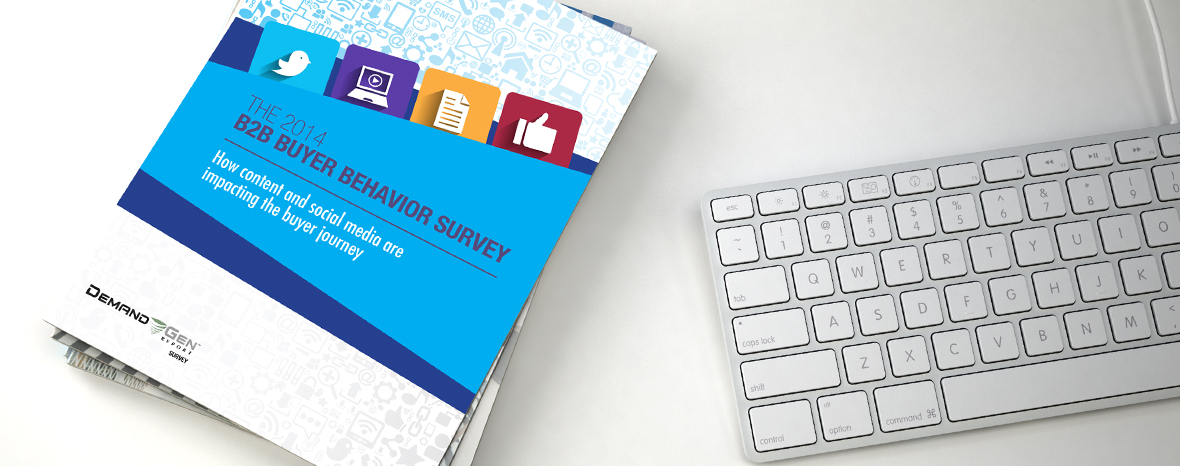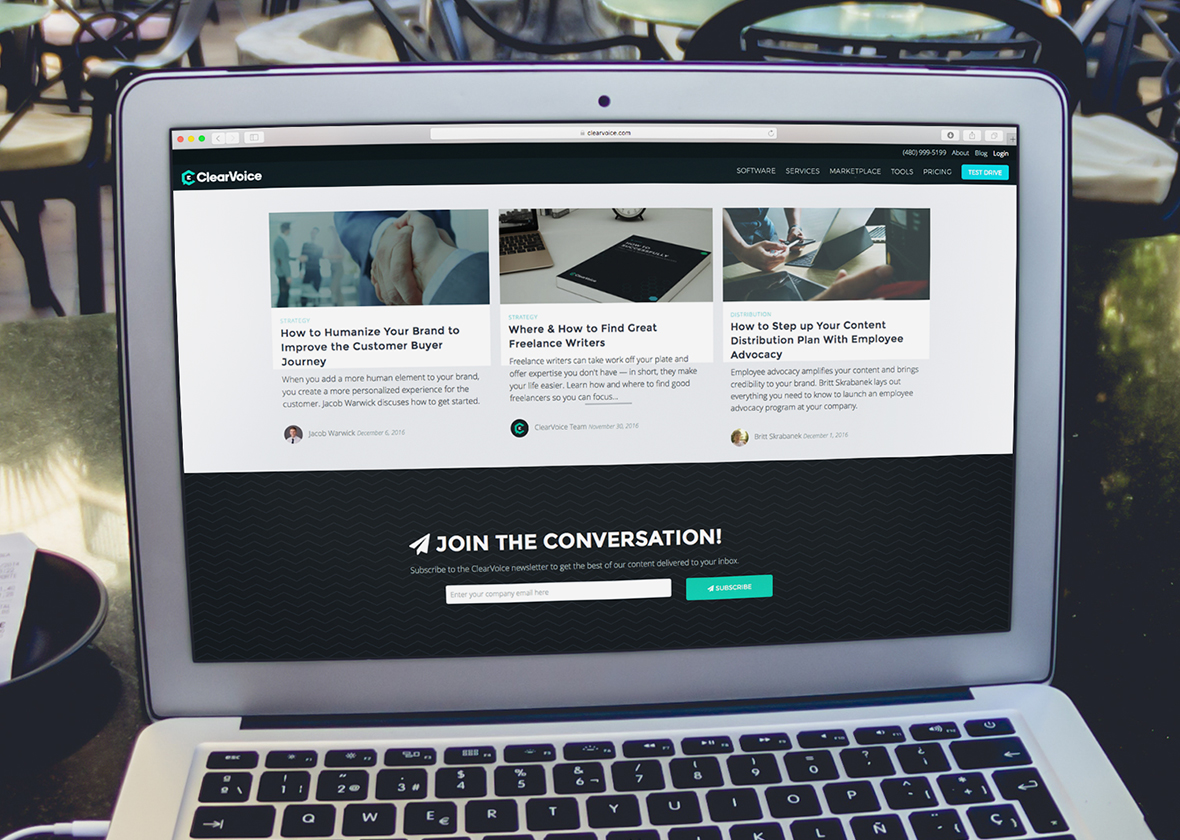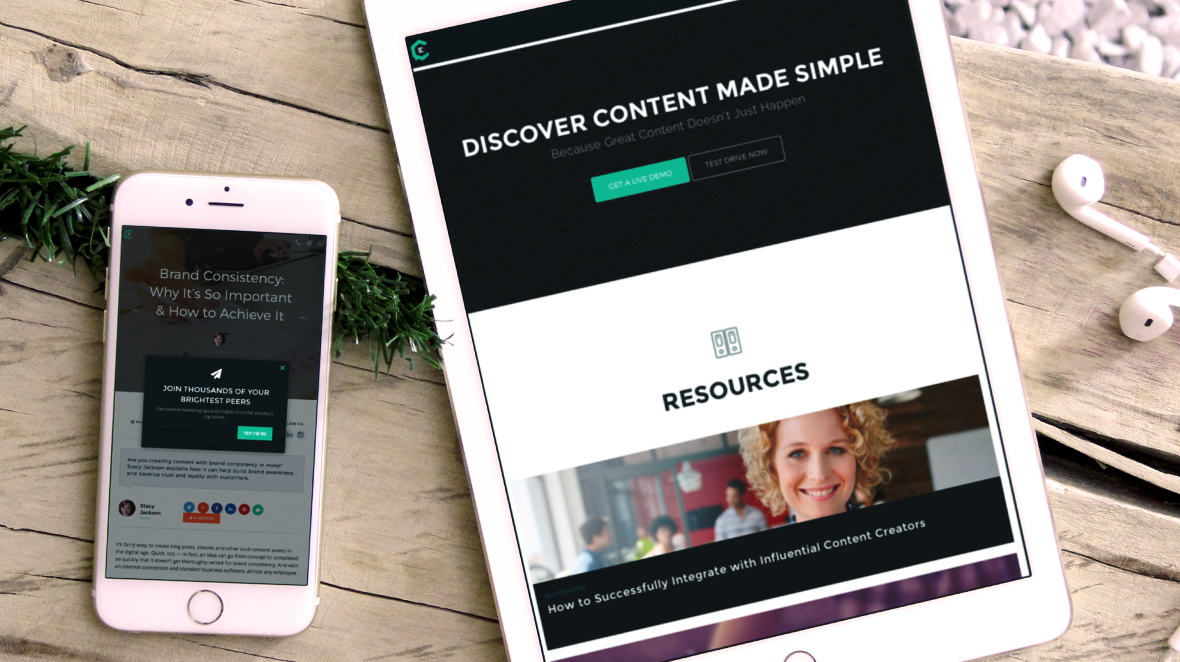Three of the most powerful weapons in modern B2B marketing’s arsenal are marketing automation, testing and optimization, and content marketing. Marketing automation and the ability to affordably test your brand messaging have reinvented B2B email marketing and the marketing funnel as we know it, but without killer content, marketing automation is a useless endeavor.
Understand how content fuels your marketing automation funnel to capture more leads, improve conversion rates, create repeat customers and enhance the purchasing experience.
>> Download the Whitepaper: How to Leverage Content Marketing to Power Your B2B Marketing Automation Funnel
Marketing automation: Set it and forget it

According to Forrester Research, which defines “top-performing” companies as companies whose growth during the last fiscal year exceeded their plan, 58 percent of top-performing companies where marketing contributes more than half of the sales pipeline have adopted marketing automation.
Marketing automation transformed B2B marketing by enabling businesses, especially small and midsize businesses, to reach more people in a cost-effective, competitive manner. More importantly, marketing automation allows small and midsize businesses with fewer resources to set up automated campaigns, nurture sequences and repeat tasks that can move prospects through the marketing funnel. The marketing equivalent of Ron Popiel’s “set it and forget it” approach to cooking chicken, marketing automation lets you set your marketing on autopilot.
Funnel 101
Most modern marketers have a good grasp on what makes up an effective marketing funnel, but for the uninitiated, here’s a quick primer.
The “funnel” is simply a visual representation of the consumer’s journey through the purchasing process, from prospect to customer and repeat customer. It’s a marketing model that traces its genesis back to the late 1890s and the Advertising Hall of Fame’s Elias St. Elmo Lewis’s AIDA model. AIDA is an acronym describing the things that occur when we successfully engage customers in marketing, advertising and sales. As anyone who’s ever seen Alec Baldwin’s horrifying motivation speech in “Glengarry Glen Ross,” in its simplest form, AIDA is:
A = Awareness I = Interest D = Desire A = Action

Since the 1960s, marketers, sales professionals and advertisers have used the image of a funnel to visually represent the consumer’s journey from awareness to taking action.
TOFU, MOFU and BOFU: Marketing’s alphabet soup
Why is a robust, optimized funnel so important to your B2B success? Because the average B2B buyer is 57 to 70 percent through the purchasing decision before they engage with a sales rep, according to Google and the CEB. Add that to this finding of a DemandGen survey:
“When comparing the eventual winning vendor to the rest of the considered vendors, 61 percent of respondents agreed that the winning vendor delivered a better mix of content appropriate for each stage of the purchasing process. This variety enables the vendor to touch on as many issues as possible that may capture a potential buyer’s interest in a solution.”

The same study went on to say,
“…66 percent of buyers agreed that the winning vendor provided higher-quality content and 63 percent said the winning vendor’s content was more conducive to building a business case for the purchase.”
The evidence is clear that an optimized funnel filled with great content increases your business’s chance of success. So, let’s take a look at what your funnel should be doing.
TOFU
The top of the funnel (TOFU) is where the greatest number of prospects live. People at the top of the funnel are looking for solutions to a particular problem.
TOFU is your opportunity to capture the consumer’s attention and educate them on solutions to the problem they are trying to solve. It’s also where you can begin developing awareness of your brand, expertise and thought leadership.
This can take the form of an email, infographic, blog, article or some other form of relevant and useful information. TOFU is abounding with emails, infographics and blog posts offering to share “10 Things All Successful…,” “The Top 5 Mistakes…,” “The 3 Most Important…,” and “How to ____ in 30 Days.” You’ve seen them all, but the bottom line is this: Lists and how-to’s can be great TOFU content.
Regardless of what you’re filling the top of your funnel with, the goal is to have keyword-rich (not stuffed) content that will pop up prominently in prospects’ search engine once they begin scouring the internet looking for answers.
MOFUs and MQLs

It’s in the middle of the funnel (MOFU) where the marketing rubber meets the road. This is where we turn those who were simply seeking more information into Marketing Qualified Leads (MQLs). In TOFU, you present solutions; in MOFU, you present your company or product as the best solution.
MQLs are now warm leads that specifically want more information on the solutions and products you have to offer. Great TOFU content is critical to MOFU, because it draws MQLs in with the perception that you are an expert and leader in your space. It’s also where we begin to share testimonials of happy and satisfied customers.
More importantly, MOFU is where we capture their contact information, once they raise their hand to subscribe to receive additional content such as a newsletter, ebook or whitepaper. You can also invite MQLs to sign up for webinars, consultations and free demos. This can be accomplished by a simple contact form that captures their name and email, or you can drive them to a landing page where you can capture even more detailed information.
Capturing their contact information enables you to create nurture campaigns that provide more information or offers that will continue to move them through your funnel. Though the goal of MOFU is to move MQLs down the funnel to becoming Sales Qualified Leads (SQLs), MOFU is also where you can begin making offers like discounts and free trials.
BOFU and SQLs
Bottom of the funnel (BOFU) is for closers, because BOFU is where leads become Sales Qualified Leads (SQLs). SQLs are hot leads that are just a decision away from becoming customers. Someone at the bottom of the funnel is a highly qualified lead who is ready to buy. This is where you convince them that the best solution is to buy from you.

In the bottom of the funnel we find content that includes case studies, product sheets and more testimonials. If your funnel has been doing its job right up to this point, BOFU is where we close the deal. Time is vital here, because the faster we can get SQLs to a sales call or offer, the better your chances of turning that person into a customer (and then a repeat customer).
Once you start mapping out your funnel, you’ll find that TOFU content will often blend into MOFU content, and MOFU will overlap with BOFU, but don’t make the mistake most do and muck up your website with a ton of BOFU offers. People coming to your site to purchase will know where to look, but most visitors are still in the top and middle of the funnel. In the middle of the funnel, it’s OK to offer consumers the option of either more MOFU content or a BOFU offer that can lead to a sale or sales contact.
Ageless and evergreen
Of course, you don’t want to create individual content for different areas of the funnel in a vacuum. Successful content creators approach the creation of content with an understanding of how it works within the funnel as a whole. As Stephen R. Covey wrote in The 7 Habits of Highly Effective People, “Begin with the end in mind.”
» Create TOFU content with a clear understanding of where you want it to lead the consumer
» Create BOFU content with a clear understanding of what got them there
Uniformity of messaging across all levels of the funnel binds your content and creates a more cohesive, consistent and recognizable brand presence.

At every stage of the funnel, you should be creating evergreen content. Relevant and timeless content is cost-effective and a far more efficient use of resources — and it keeps you from constantly having to create new content. It also helps builds stronger SEO.
You should also look at all content with an eye toward repurposing. Ask yourself:
» Can some of your blog posts can be combined to create an ebook?
» What content can be shortened for email?
» Are you editing longer videos or webinar content to create more easily consumed and shared video content?
A survey by the Lenskold and Pedowitz groups found companies that adopt marketing automation are 45 percent more likely to repurpose content for efficiency than companies that don’t.
Automation… fueled by content

Properly set-up funnels guide consumers, regardless of where they are in the funnel, step-by-step to becoming a customer. The value to business is that once you set up your campaigns, marketing automation leads potential consumers through the funnel for you, automatically. It then continues to nurture prospects who fail to take action, so you can eventually convert them into customers as well. Those who don’t buy, can simply be removed from the list or saved for a re-engagement campaign later.
And if your content isn’t any good, all the automation in the world won’t save you.
Our latest whitepaper explains which types of content to use at the various stages of the funnel and how to use content in various types of automated marketing campaigns. For the complete guide, download “How to Leverage Content Marketing to Power Your B2B Marketing Automation Funnel.”



